#ancient egyptian mythology
Text
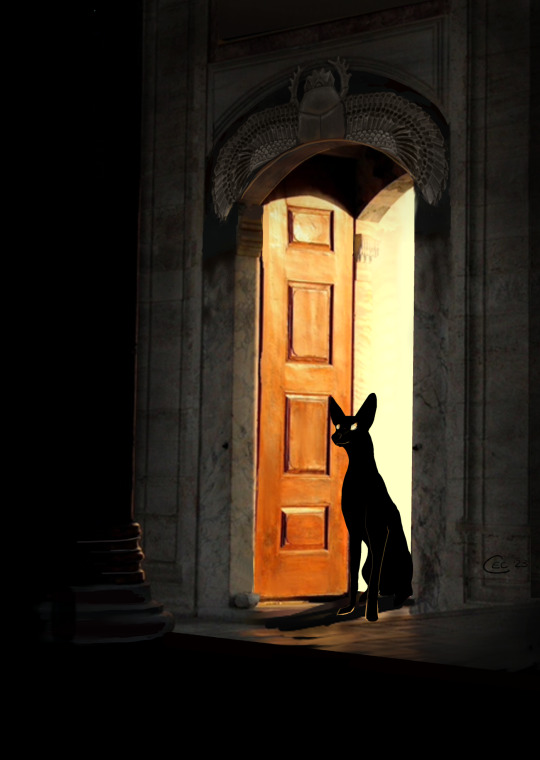
A guide will be waiting for you.
#art#artists on tumblr#anubis#tw: scopophobia#kemetic#kemeticism#dog#ancient egyptian mythology#mythology#egyptian mythology
3K notes
·
View notes
Text
333 notes
·
View notes
Text
Im Hotep y'all
Just moved into my new apartment and set up my altar!!
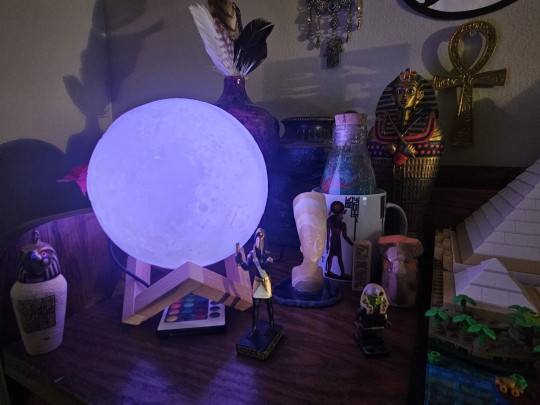



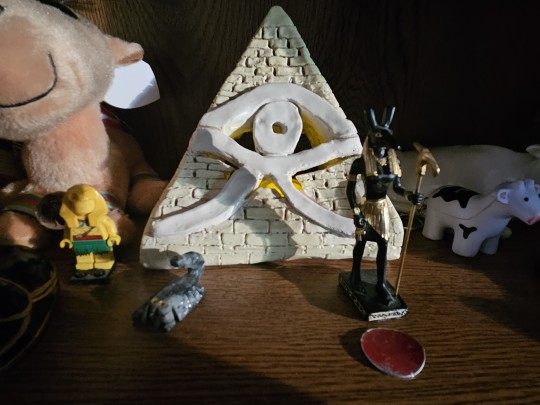

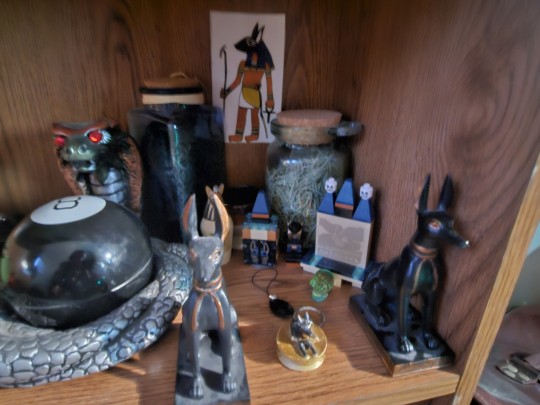
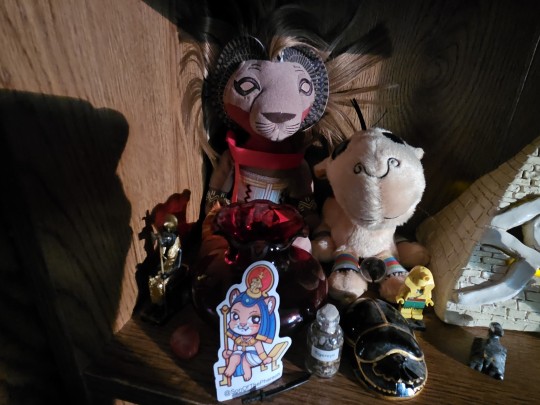
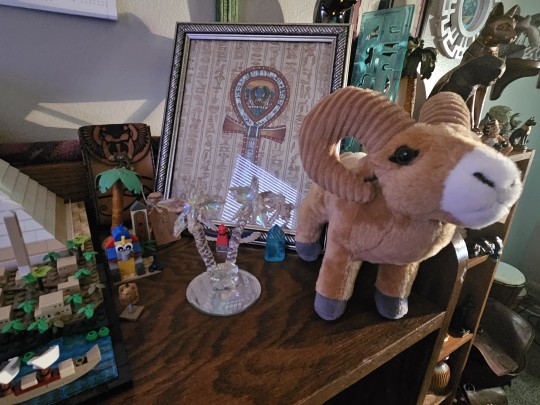

Gonna definitely try to implement worship and magic into my schedule now as soon as I get a job. Seneb Ti!
#kemetic#kemetism#heka#bastet#anubis#altar#hathor#sobek#set#seth#thoth#ancient egyptian mythology#amun ra#sekhmet
199 notes
·
View notes
Photo


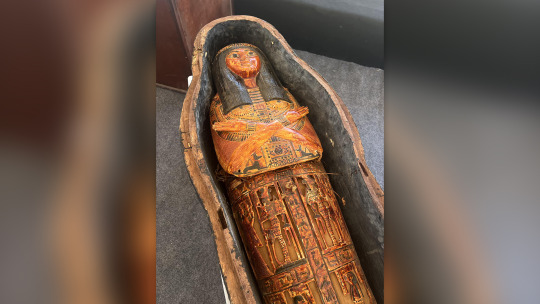
Ancient Egyptian cemetery holds rare 'Book of the Dead' papyrus and mummies | Live Science
79 notes
·
View notes
Text
The Contendings of Horus and Set (and homosexuality in Ancient Egypt)

(The image is the Chester Beatty Papyrus I, written in hieratic, containing the mentioned story)
In my last post I (affectionately) called Set "the Gay Uncle of the Egyptian Pantheon" and promised to elaborate more on it in another post.
(CW: sexuality talk, bits of violence and- lettuce. No strong language)
First, a "little" foreword on homosexuality in Ancient Egypt: this is a very complicated subject as I gathered since, well- we don't know very much about it. The few accounts that survived are either disputed or offer little information on the general attitude towards same-sex relationship outside the single case.
It's also difficult to talk about heterosexuality, homosexuality and bisexuality in ancient times at all since the way we know them is a relatively modern concept (the word homosexuality is first attested in 1868 on a letter to Karl Heinrich Ulrichs by Karl-Maria Kertbeny) and before christianity became mainstream the biggest concerns were at best pointed towards the practices (mostly, Taking It™).
For everything else, relationships were just relationships.
The best known example of a same-sex couple were these guys, since it's likely the earliest recorded in history:

They're Khnumhotep (ẖnm.w-ḥtp(.w)) and Niankhkhnum (nj-ꜥnḫ-ẖnm.w), two royal servants and confidants who had the prestigious task to be the king's head manicurists. In their mastaba tomb in Saqqara are depicted in poses traditionally reserved for couples - like holding hands, embracing and kissing.
However, both of them had wives (Khenut and Khentikawes) and 6 children each.
Ancient Egyptians were very passionate about fertility - which is understandable considering how easily people could die any day for any reason back then. The more children you had and the more the chances that at least one of them survived to adulthood and could carry on jobs and duties.
So as long as you were a (re)productive member of society, it wasn't a big deal that you enjoyed / preferred the company of an individual of your same sex.
The big deal was, as I mentioned, Taking It™ for two main reasons:
Power dynamics. Assuming an active role during the intercourse meant at the same time asserting your dominance and/or humiliating the person on the receiving end of it
Something that I understood as "guy takes up the role of a woman during the intercourse but with none of her reproductive power" which considering how massively important being fertile was to them... well. Makes it a practice as sterile as the desert
And guess who was the god of deserts? our guy Set

(and also storm, disorder and violence to be precise)
His name was written either stš, swtḫ, swtj or stẖ depending on the time period (the Greeks just went with Seth)
He also loved eating this particular vegetable a normal amount (keep it in mind, we'll need that later):

Set was one of the children of Geb (the god of the Earth) and Nut (goddess of the sky) along with Osiris, Isis and Nephthys - who he was married to.
Osiris was king at the time and upheld the rule of ma'at (ideal natural order, fundamental concept of AE culture) along with Isis, his wife-sister.
At some point Set murdered Osiris, tore his body into pieces and scattered them all around Egypt. Reasons for this act may have been:
Osiris kicked him
Osiris had an affair with Nephthys
Isis and Nephthys in the form of either a falcon or a kite searched for all pieces and with the help of Anubis put them all together in what is considered the first mummy in Egyptian tradition. Isis uses her wings to briefly fan new life in Osiris' body and the two conceive a child, Horus.
Osiris' resurrection was not permanent and after his time was out he became ruler of the Duat (the realm of the dead), while Isis raises Horus in secret until he was old enough to come back to challenge Set for his throne.
The dispute took the form of a series of competitions (like racing with boats or fighting each other in the form of hippopotami) and legal judgement before the assembled council of gods, the Ennead.
During one of the competitions Isis tried to help her son while he was locked in combat with Set but accidentally spears Horus - he got FURIOUS and beheaded his mother. Then tried to fix it by sticking on the body a head of a cow. No one will ever notice, amright?
(This gives the mythological origin of the cow horn headdress Isis sometimes is depicted wearing)
Horus repeatedly defeats Set in the various competitions and is largely favoured by the the other gods, but the head of the Ennead was Geb and Geb liked Set so they were stuck in this limbo situation of tie for years.
and then - brace yourself. Now it comes the key moment of this story.
Set and Horus have sex.
I'm serious
The details of this obviously varied from account to account (as most of myths in Ancient Egypt, it was almost expected to have different variations of it depending on the time period and place)
According to one account, it was deliberately only to humiliate him
According to another, he genuinely wanted to bang his nephew other than the act of dominance / humiliation thing, he didn't take no as an answer and got him drunk
According to another one again it was consensual, Horus agreed on condition that Set would've given him part of his strength (my fave)
But Horus was a smart birb and he either caught Set's seed with his hands (don't ask me how) or removed it in secret, so to make Set believe the act was successful. Horus tells his mom about what happened and the morning after they plan something.
Horus wanks on some lettuce and Isis serves it to a clueless Set.
Who eats it all.
The next time the Ennead were called to judgement, Set mentions having laid with Horus as a mean to demonstrate he has asserted his dominance over him so he had the right to claim the throne for himself. Horus disagrees. Geb verifies who of the two had the other's seed in his body and-
Set did.
Horus thus won the dispute
They eventually reconcile with each other and shared the lands to rule (which might have been fertile lands of the Nile to Horus and foreign deserts to Set, or one had the land and the other the sky, or the two traditional halves of the country). With this reconciliation, the dualities they represent are also reconciled into a united whole restoring order after the conflict.
(according to other accounts Geb played the bitch and gave sole reign to Horus, to other much later when Egypt was a bit in a bad place Set was utterly defeated, exiled and/or destroyed)
Funny thing is that Set actually got pregnant from the tainted lettuce and gave birth to either:
A golden disk on his forehead
Thot
Thot's moon disk (in versions where Thot is present during the dispute)
Well ancient Egyptian mythology sure is something huh
#ancient egypt#ancient egyptian lore#ancient egyptian mythology#mythology#contendings of horus and set#moon knight#set#seth#horus#osiris#q tag#sexuality#ancient egyptian sexuality#homosexuality
145 notes
·
View notes
Text

12: Isis and Osiris, part 3
This great one is fallen on his side, he who is in Nedyt is
cast down.
Your arm is taken by Ra, your head is lifted up by the two
enneads.
Behold he has come as Orion, behold, Osiris has come as
Orion,
Lord of wine at the wag-festival.
'Perfect one,' said his mother; 'Heir,' said his father.
Conceived by heaven, born of the underworld:
Heaven conceived you together with Orion;
The underworld bore you together with Orion.
Whoever lives, lives by the gods' commands: you shall live!
You shall set forth with Orion in the eastern part of
heaven;
You shall descend with Orion in the western part of
heaven.
Making three of you is Sirius, pure of thrones:
She is your guide on the goodly parts of heaven,
In the Field of Reeds.
From the Pyramid Texts of Pepi I translated by Toby Wilkinson.
The Pyramid Texts are a diverse group of hymns, incantations and spells, composed to assist the deceased king in his resurrection, ascension to the sky and admission into the company of gods. In the Sixth Dynasty the cult of Osiris was on the rise, thus Osiris began to play a key role in this transition from death to rebirth, and the texts make explicit references to the Osiris myth. Nedyt is the mythical location where Osiris was slain by his brother Seth. The Field of Reeds is a concept associated with the Osirian model of the afterlife: an agricultural idyll where the deceased could live an eternal life of fertility and abundance.
#isis#osiris#ancient egyptian mythology#the pyramid texts#i was supposed to draw this last year but didn't have the time
63 notes
·
View notes
Text
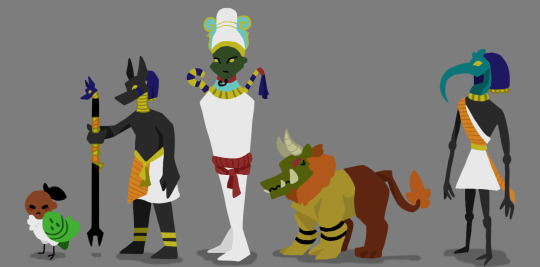

the bois ft. pixel versions
#kemetic#kemetic art#anubis#anpu#osiris#wesir#ammit#thoth#djehuty#pixel art#illustration#ancient egyptian mythology#ancient egyptian art#my art
179 notes
·
View notes
Text
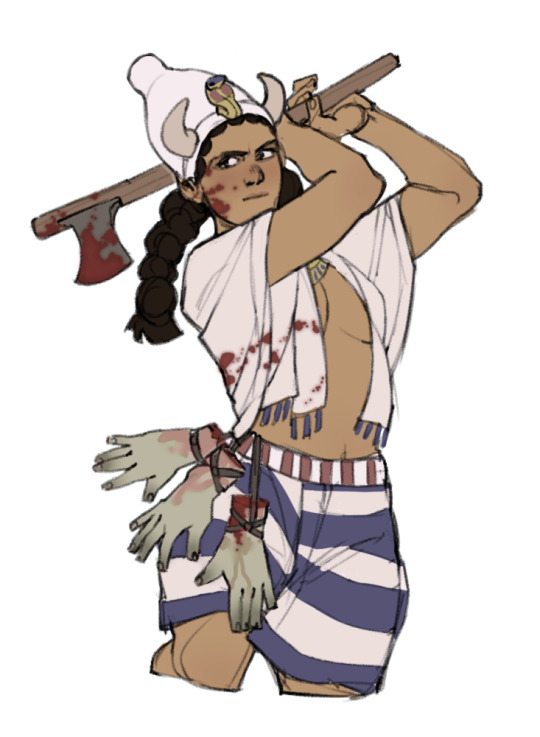
She seized divine Mot,
With a sword she split him,
With a sieve she winnowed him,
With fire she burnt him,
With mill-stones she ground him,
In a field she scattered him;
His flesh indeed the birds ate,
His limbs indeed the sparrows consumed.
Flesh cried out to flesh!
#anat is a non-binary icon#'anat‚ the victorious goddess‚ the woman who acts like a warrior‚ who wears a skirt like men and a sash like women'#ugaritic mythology#canaanite mythology#ancient egyptian mythology#ba'al cycle#levantine mythology#speaking of mythological figures‚ i... er... i seem to like them violent‚ huh#tw blood#tw light gore#art tag
108 notes
·
View notes
Text

Quick illustration of Nut
#artists on tumblr#my artwork#illustration#kemetic deity#kemetic pantheon#ancient kemet#kemet Nut#nut egyptian goddess#Nut#ancient egyptian mythology#egyptian paganism#anicent egypt#egyptian#kemetism#kemeticism
12 notes
·
View notes
Text
Like are you sure Anpu and Anput aren’t just the same gender-flux being? Have you EVER seen both of them in the same room at the same time?
#for legal reasons this is a joke#anpu#anput#Anubis#inpw#inpwt#kemetic fandom#kemetic#ancient Egyptian mythology#ancient egypt#shitpost
13 notes
·
View notes
Text
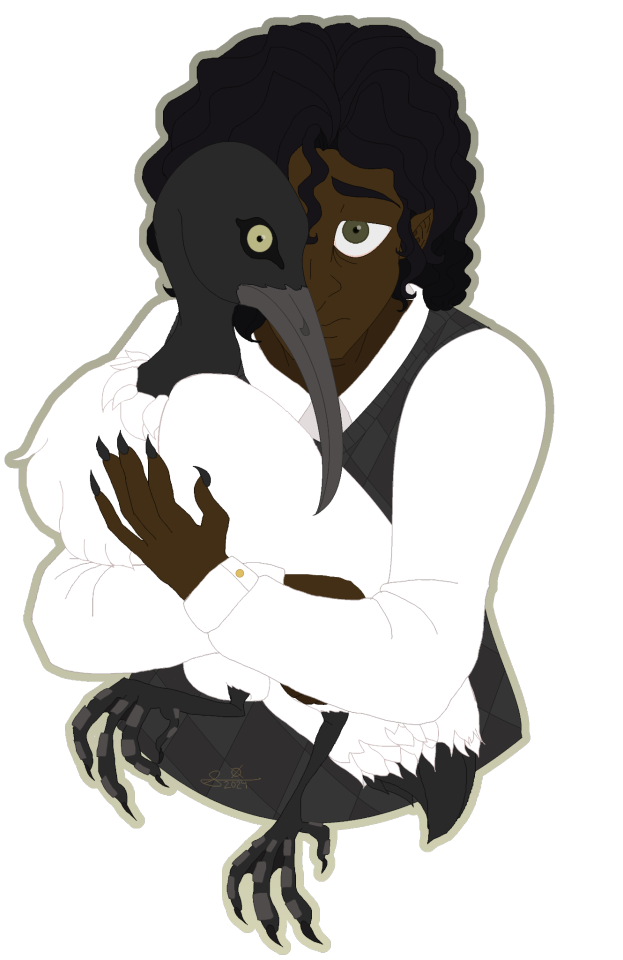



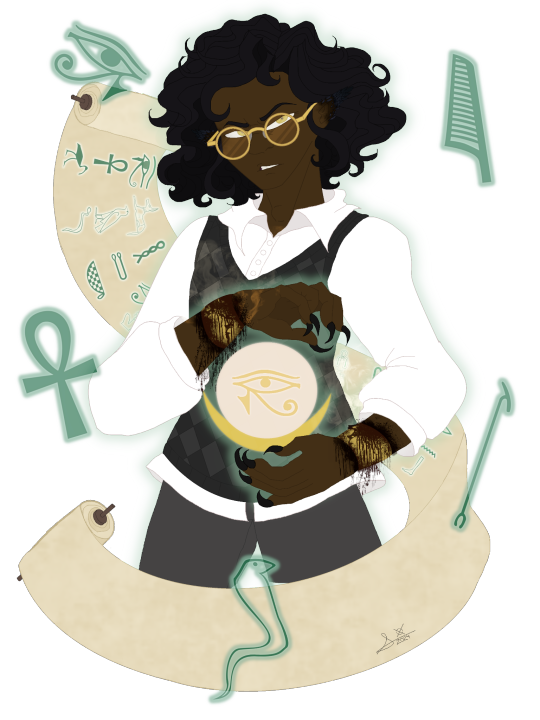





Today on "Look what digital art I've been cooking for my AU for two weeks"
For those curious: These are cursed human designs of Egyptian Gods and Goddesses for my Cursed God AU! I've finally gotten around to doing colored pieces with them involved!
We have:
A portrait of Thoth with an African Sacred Ibis
Thoth with his wife Maat prior to the cursing - Side note: M'aat has burns around her eyes as part of her AU design (which I really struggled hard and not completely happy with) due to her being a fallen angel and punished with near complete blindness prior to falling. I tried my best.
Anubis, Set, Thoth, Horus and Khonsu in my Battle Portraits series
Both sets of group images of Thoth Khonsu and Horus I did for my Instagram involving their battle portraits and chibi forms
Finally a portrait of chibi Anubis!
I hope you enjoy my work!
Other Cursed God AU stuff I've posted!
#my stuff#my art#my au#cursed god au#egyptian mythology#egyptian gods#ancient egypt#my artwork#digital artwork#ancient egyptian mythology#egyptian goddess#do not repost#feel free to reblog#cursedgodau#ancient egyptian
7 notes
·
View notes
Text
welcome to my ted talk.
this is a post about romances that are written and viewed through the lense of a partner being a deity. mostly talking about fictional characters. this is also me being an anthropology nerd
the earliest example of this that i can think of is greek mythology. as is with most things. in greek mythology, there are likely hundreds of examples of gods courting animals and humans alike, though not always consensually. for the purpose of this post i’ll only be looking at the consensual ones. specifically, we can use the example of ariadne and dionysus.
ariadne and dionysus have one of those princess-in-a-dungeon love stories. king minos, a scary bull, put ariadne in a labyrinth, and dionysus saves her because she’s beautiful. to my knowledge, whether or not ariadne loved him isn’t fully explained. the reason i include this example is that it specifically shows a sort of weakness of the gods; love. almost all gods, in almost all mythologies, are capable of love, and it is almost always their downfall.
this idea of love as a downfall is different from what we usually think of with god-complex relationships. usually, one person is so delusional and in love that they view a partner as a god. but in most ancient examples, these stories are told in relation to the god and not the mortal. so why are gods, especially in greek mythology, so attracted to mortals?
there’s an aspect of rebellion to it. gods and humans are meant to be separated, as demonstrated by titanomachy, the war between humans and gods. but after several thousand years, you would get tired of having affairs with your cousins, right?
that brings me to my next conclusion; it’s simply because love happens. even nephthys, the ancient egyptian goddess, is capable of love; she was depicted as lesbian or bisexual in order to function as being unable to have kids. love is a force that not even the gods themselves can escape, though they often find solace in it.
gods who have affairs with humans are typically not well off. take zeus for example. sure, he’s the king of kings, god of gods, but his life is a mess. everyone hates him, including his wife, and he’s kind of a tyrant. but humans view him as mighty as ever, fearing and loving him just as ever. he finds that power he lost in the humans, so he harvests it.
so where do we get the stereotypical yandere god-loving romances? humans in relationships with gods are never treated with dignity, if they get to live in the first place. why is it so desirable?
i think, in some ways, gods sometimes see us above them in the same way we see them above us. lets go back to the idea of gods finding solace in human relationships; you could argue that the gods would be zealous of humans. we have much less to worry about. in the same way, humans honor gods for many reasons, but in the very core of their supernatural being; the fact that they can just generally handle more, be better, be perfect, even.
the yandere god-loving romance, without doing too much research, may just come from that dynamic. that, as humans, we should worship that which is better than us, and maybe we’ll get some kind recognition in return.
i should note that i have done zero research and i just like talking.
thank you for listening to my ted talk.
#i dont expect anyone to read this#im just autistic#anthropology#archaeology#zeus#greek mythology#dionysus#ariadne#nephthys#ancient egyptians#ancient egypt#ancient egyptian mythology#im a nerd#gods#religion
7 notes
·
View notes
Text

Imagine Evelyn being ecstatic about your shared interest in Egyptology
Masterlist
#the mummy#the mummy returns#evelyn carnahan#imagines#1920s#egypt#hamunaptra#egyptology#book#amun ra#book of the dead#ancient egyptian mythology#librarian#excitement
7 notes
·
View notes
Text


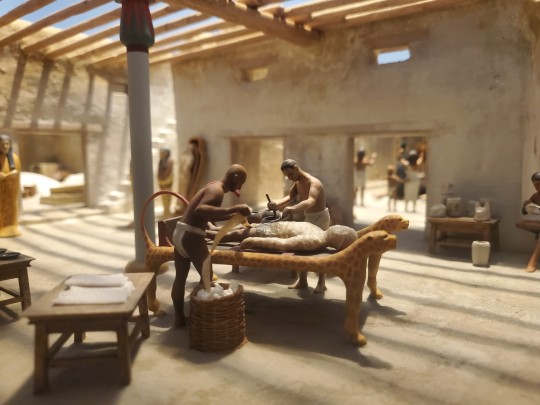
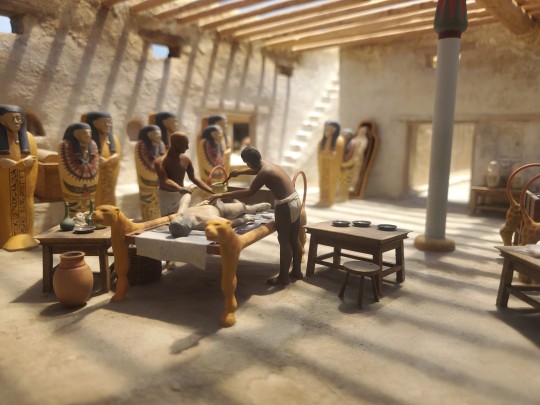





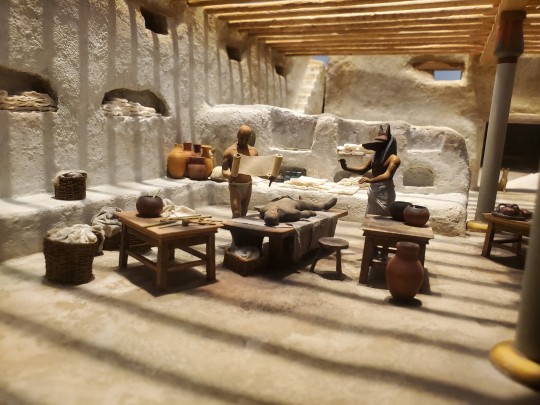
Idk if this has been posted before or not (cant remember I'm high) but this is a miniature diorama of the ancient Egyptian embalming process from the Field Museum in Chicago!!!!
#kemetic#kemetism#anubis#ancient egyptian mythology#ancient egypt#egypt#museum#my photos#photography
22 notes
·
View notes
Text
a lot of people say that seth is the zeus of the ennead and all i can say to that is atleast he pulles out on time.
#yea saw that for ths first time#and immediately thought that#guy has great timing#considering. everything.#ancient egyptian mythology#egyptian mythology#egyptian gods#set#seth#sutekh#typhon#setekh#setesh#god set
7 notes
·
View notes
Text

Ah yes, the human sacrifices from the early period of ancient Egypt
Ritual human sacrifice
There was a time during the pre-dynastic and first dynasty period where they used to ritually sacrifice humans - it was either a survival of prehistoric cultural practices or an experiment of absolute power conducted by the first kings of Egypt. It was part of a few unusual aspects of early religion that may have belonged to a very ancient African substratum of Egyptian culture (another odd cultural thing was the reverence towards the royal placenta).

(picture from the book Early Dynastic Egypt, by Toby A. H. Wilkinson)
Picture 1:
This is a label of Aha from Abydos, showing a kneeling figure plunging a sharp weapon through the chest of a prisoner with his hands tied behind his back, supervised by a figure of authority (identified by the long staff). There is a bowl between the executioner and the victim to (possibly?) collect his blood. It was probably related to the fashioning of a ỉmỉ-wt (or Imiut) fetish, which in later periods was associated with Anubis.
The Imiut fetish, consisting of headless animal skin tied to a pole by the tail and terminating with a lotus bud:

Very little textual evidence survived about this ritual though so we don't really have the context behind it, welp.
Picture 2:
In this wooden label from Saqqara the ritual sacrifice seems to be realated to the fashioning of a falcon standard and a Imiut fetish (in this case both represented royal authority). This scene represents a formal presentation of cultic objects to the king.
There is a ms symbol (𓄟 which mean both to give birth and to form/create/produce) over the head of some people in the first register of the label forming a line or a parade before the serekh symbol of Djer (third pharaoh of the first dynasty)
The serekh symbol is a falcon mounted on a stylised palace façade and it was used in the early period to enclose the name of the king before it evolved to the more well known cartouche
Each of these people carried a different "totem" object:
A ladder-like object, which may be a reference to the ladder mentioned in the Pyramid Texts being used by the king to ascend to the stars
A mummiform figure
A large catfish (which was used to write Narmer's Horus name, he was the one who unified Egypt and became the first pharaoh of the first dynasty)
A pelican
The procession is followed by a man carrying a spear and immediately after him there's a human sacrificing scene almost identical to the one on picture 1.
Retainer sacrifices
Less relevant but let's talk a bit about this - the royal tombs of kings from Aha to Qa'a (first dynasty) were accompanied by burials of their servants either in rows or surrounding the king's tomb, each placed in according of the role or position the occupant occupied during the king's reign. Some of them (especially from Djed onwards) were named and possibly occupied the position of high officials, so not just simple servants. Important people.
Excluding Narmer, all kings of the first dynasty chose their favourite staff or household members to be killed (most likely strangled) and buried with him.
The practice fell out of use during the second dynasty when the royal cemetery of Saqqara became more used compared to the earlier Umm el-Qaab. And the diffusion of the ushabti.
I know. I know you recognised the term from the MCU show.
The usabtis in real life history were figurines that first appeared as a stand-in for the dead person, so once in the afterlife they could animate it with a spell and the ushabti would do all the jobs and tasks the deceased person used to do in life, thus letting them enjoy the afterlife and relax in the field of reeds.
It was first just one as a stand-in for the deceased but with time it became quite a common practice to include whole sets of them specialised for different jobs and with included supervisors.
Some example of ushabti figures:

#moon knight#moon knight comics#moon knight 2016#lemire#smallwood#bellaire#torres#francavilla#stokoe#xenon reacts#q tag#ancient egyptian#ancient egypt#ancient history#ancient egyptian history#ancient egyptian mythology
20 notes
·
View notes